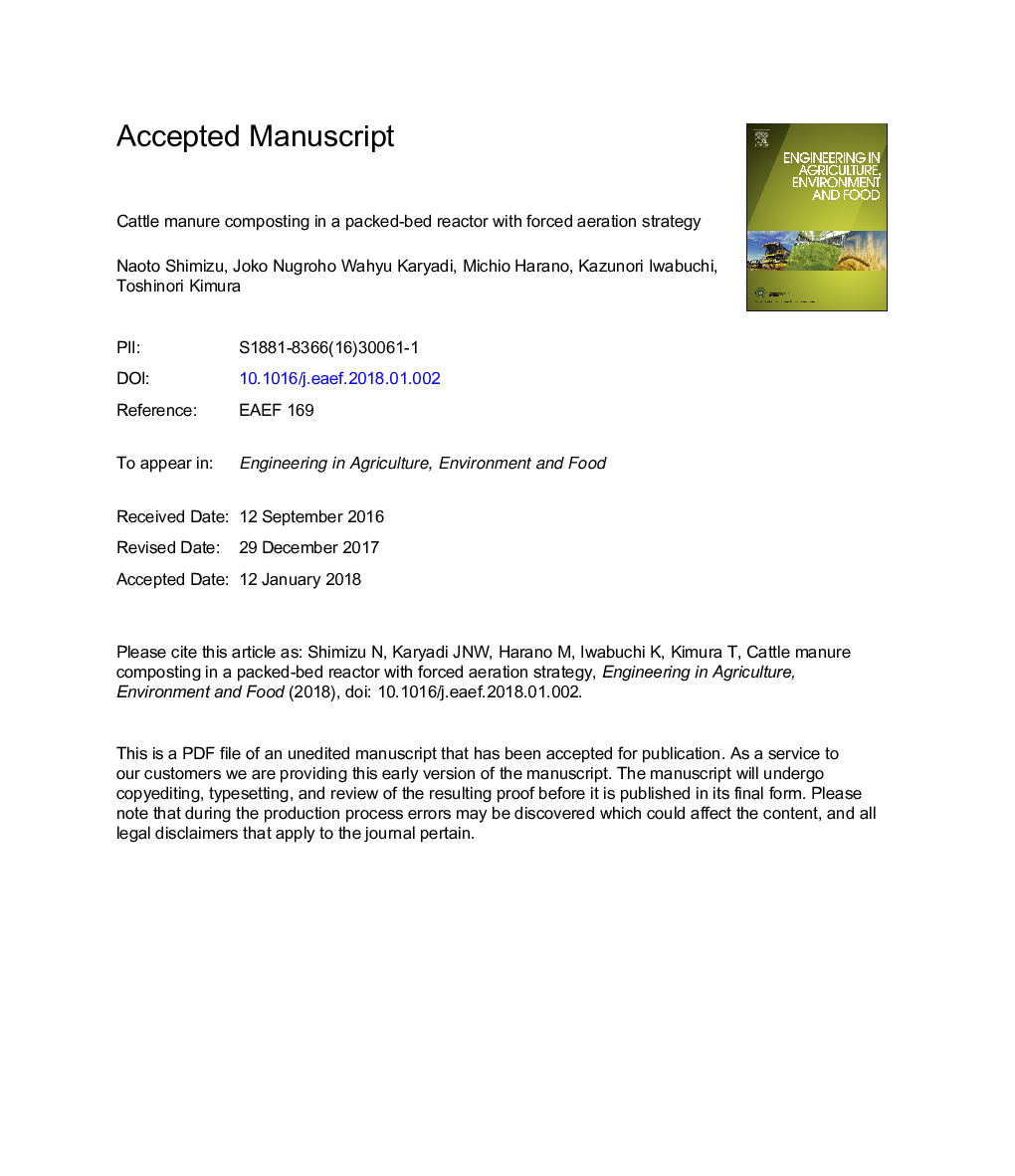| Article ID | Journal | Published Year | Pages | File Type |
|---|---|---|---|---|
| 8878667 | Engineering in Agriculture, Environment and Food | 2018 | 42 Pages |
Abstract
The aim of this study was to determine the appropriate strategy for cattle manure composting with forced aeration. The composting of cattle manure was conducted using an 18.8â¯L reactor with three different amounts of total air supplied (1080, 3240 and 10,800â¯L/kg dry mass) during 360â¯h of composting using continuous and on/off sequencing (20â¯min/h) aeration methods and three turning patterns (no turning, full turning and turning with position change). The degradation of organic matter in three-stage systems (the compost was turned every 120â¯h over the 360â¯h period) was significantly affected by total air supply volume and was large in the case of on/off sequence aeration. The pattern of moisture change was more affected by turning than by aeration modes. The optimal composting conditions for organic matter degradation (maximum of 37.7%) were aeration rate: 0.45â¯L/minâ¯kg dm, aeration mode: on/off sequencing process and full turning. The total accumulated weight losses and heat generated during composting indicated significant effects of the total air supplied and were large in the case of the continuous process.
Keywords
Related Topics
Life Sciences
Agricultural and Biological Sciences
Agronomy and Crop Science
Authors
Naoto Shimizu, Joko Nugroho Wahyu Karyadi, Michio Harano, Kazunori Iwabuchi, Toshinori Kimura,
